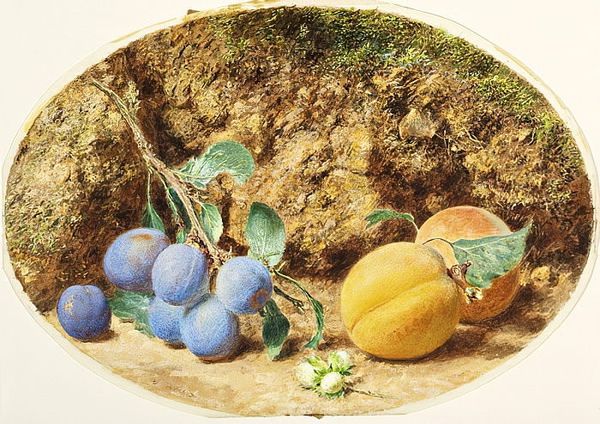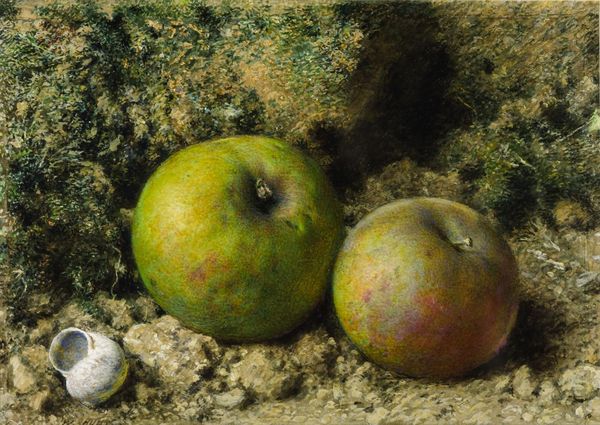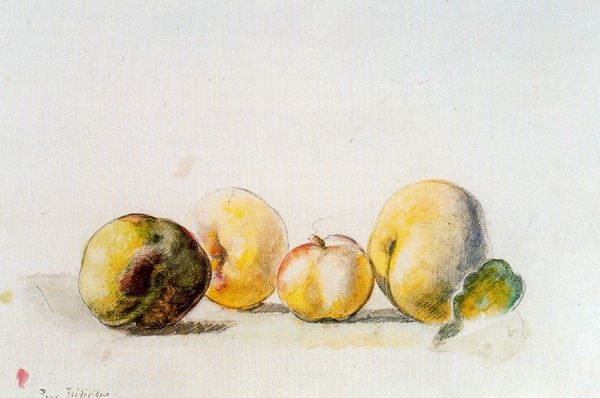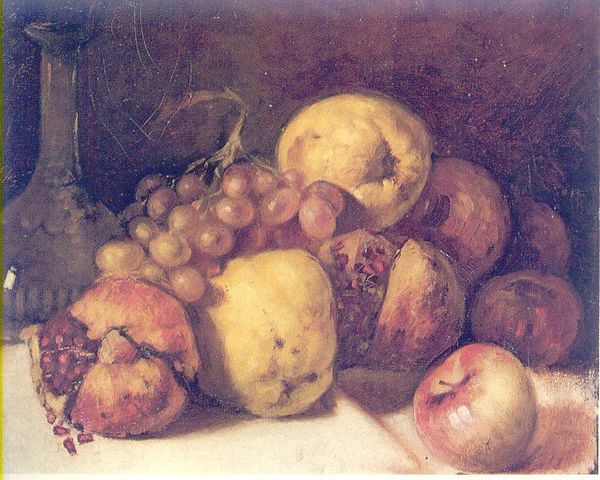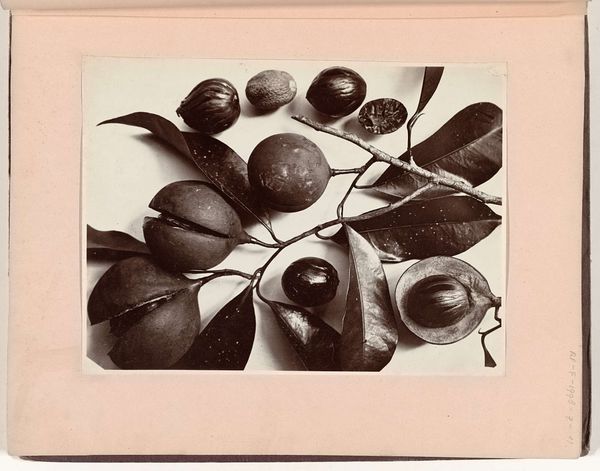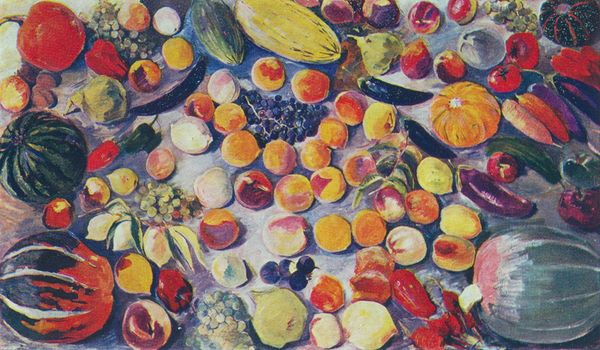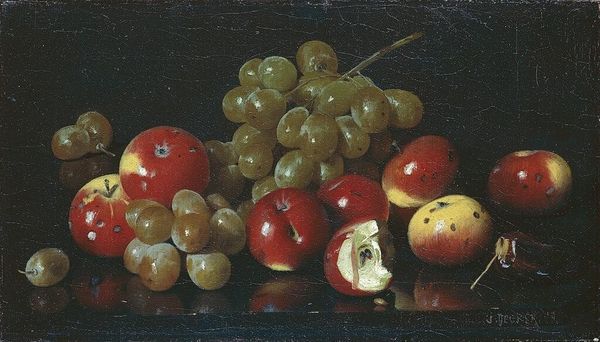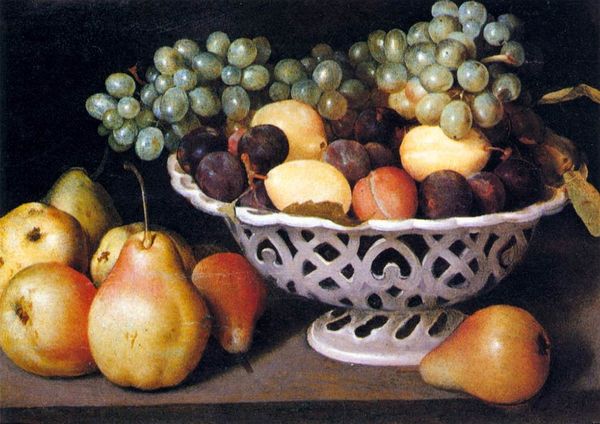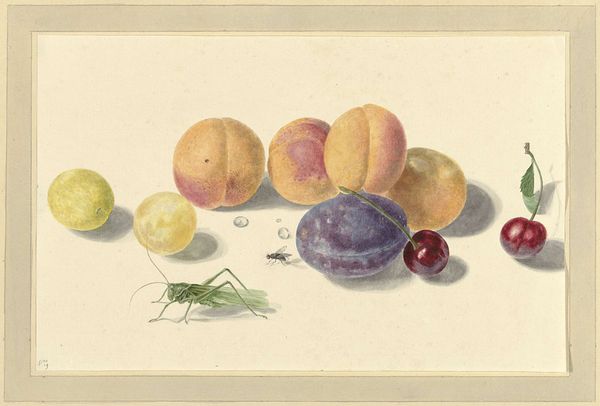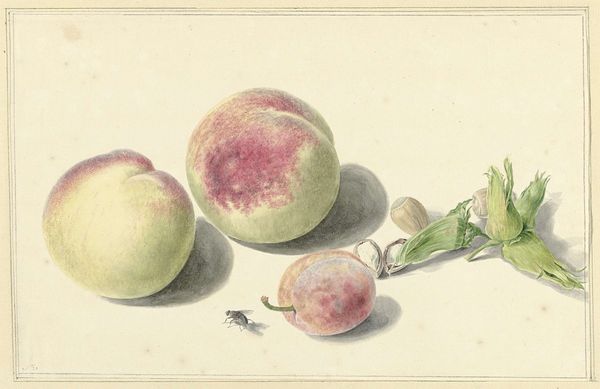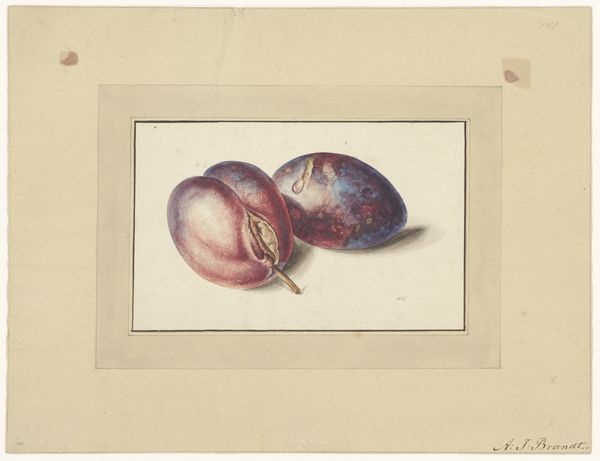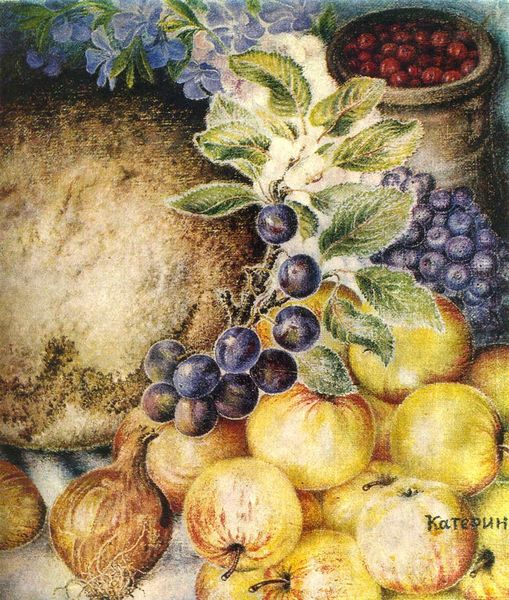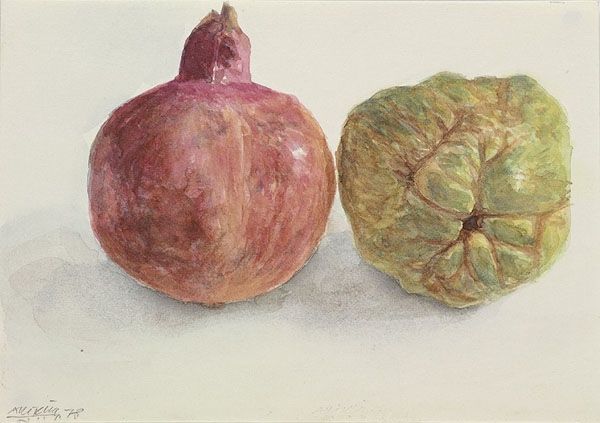
Copyright: Public domain
Editor: So, here we have William Henry Hunt's "Plums and Mulberries," a gouache painting from 1860. I’m struck by the intense realism, it’s like you could reach out and touch the fruit. What's your take on it? Curator: The choice of plums and mulberries themselves is telling. Think about what they represent. Plums, in some cultures, symbolize perseverance due to their ability to blossom even in harsh conditions, while mulberries can be linked to prosperity and abundance. The Romantic era frequently used these visual emblems to speak to deeper emotional or moral concepts. Does this arrangement seem to tell a specific story to you? Editor: Hmmm, a story? I mostly saw a beautiful still life. The lighting is amazing! Curator: Precisely! Note how the light illuminates the fruits but also the moss and the rough texture of the earth. Light and shadow are not just about realism here, but also about drawing attention to the textures of life, the fleeting beauty within the commonplace. Consider the subtle use of colour and form. Do you notice anything specific about how the composition leads your eye around the picture? Editor: Well, my eye does keep circling around the arrangement. Curator: Consider how this might invite contemplation, a seeking for meaning in the smallest details of existence. And consider what lies discarded…the empty snail shell… Editor: I hadn’t really noticed it. So the still life isn't just about showing pretty fruit? It's loaded with symbolism, a reminder of life's journey! Curator: Exactly! It's a conversation between what is seen and what is meant. Next time you see a seemingly straightforward image, remember to ask, what cultural echoes vibrate beneath the surface? Editor: This has completely changed how I view still life paintings. Thank you!
Comments
No comments
Be the first to comment and join the conversation on the ultimate creative platform.
